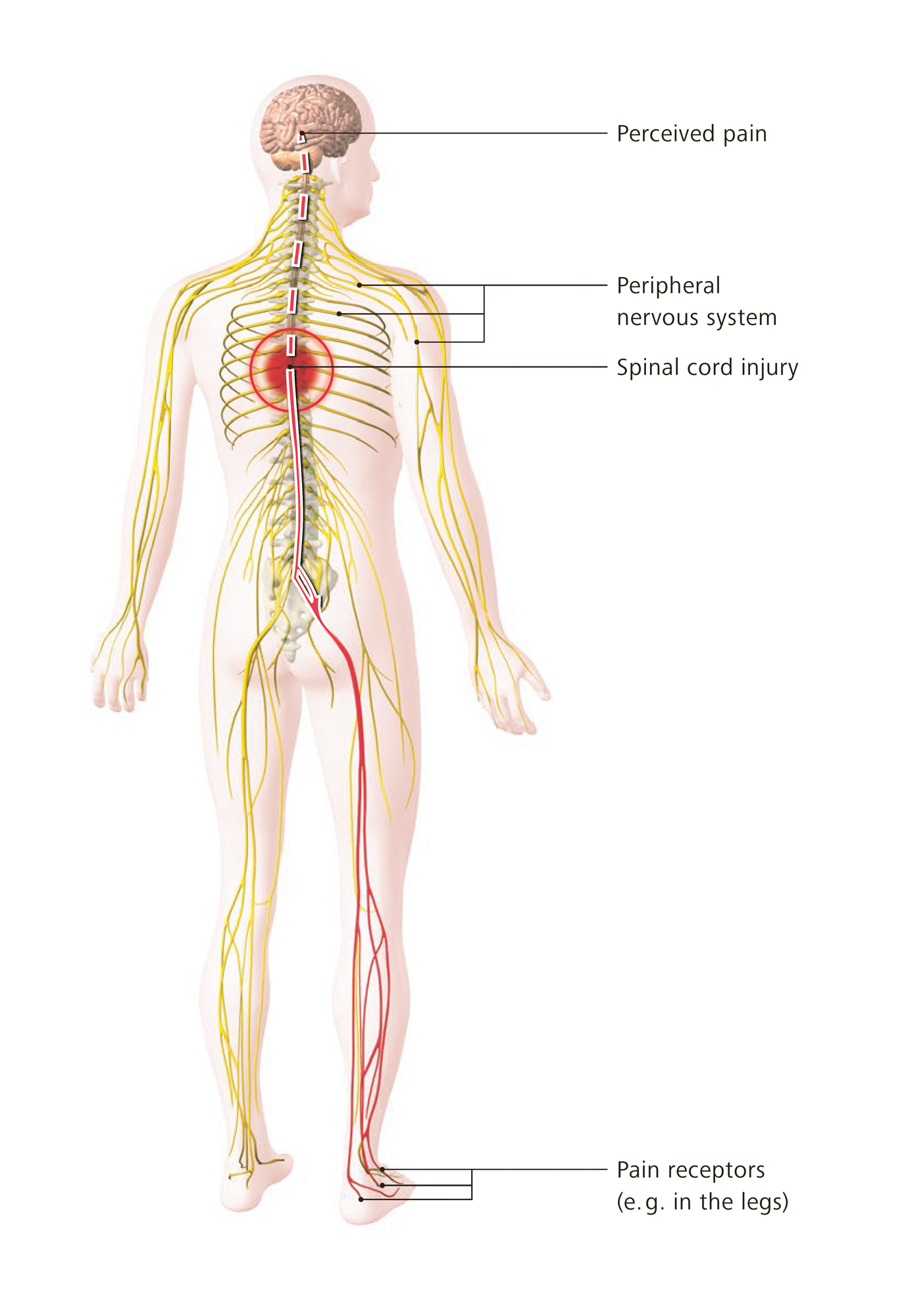
- 3 minutes to read
- 30 July 2019
Pain is a basic human experience that we are often confronted with in our lives – sometimes even on a daily basis. We hit our head, our wisdom teeth are aching or we get a headache when the weather changes.
There are different types of pain. Musculoskeletal pain can be treated with conventional measures, as well as with physical measures. But many people with spinal cord injury (SCI) suffer from pain that is much more severe, as their central nervous system is irreversibly damaged. Scientific studies have shown that 58 % of all people with SCI suffer from chronic neuropathic pain in the first year after SCI. In most cases, the symptoms exacerbate over the years and many people report that permanent pain reduces their quality of life significantly. In some cases, activities and tasks of everyday life, such as working, driving and enjoying hobbies might be affected so much that an active participation in social life is only possible from time to time.
But what is chronic neuropathic pain?
Neuropathic pain can be caused by mechanical, toxic1, metabolic2 or inflammatory damage of the central or peripheral nervous system. There are two types of pain: nociceptive and neuropathic pain. In nociceptive pain, the nervous system is intact, e.g. pain in the knee joint due to joint wear. Common examples for neuropathic pain are: pain in the leg caused by an incarceration of the nerve root due to a disc herniation or the so called “phantom limb pain” following the surgical amputation of a limb. People may perceive neuropathic pain in many different ways. It can range from tickling, dragging and electrifying to burning, stabbing or sharp pain, or it can even be a very oppressive or pressing feeling.
Neuropathic pain and paraplegia
The figure shows neuropathic pain in the case of paraplegia spinal cord injury. Due to a dysfunction of or damage to the nervous system, the pain receptors receive pain, although there is no local injury (e.g. in the legs). The message is sent through the peripheral nerve but does not reach the pain centre of the brain due to the SCI. Yet, paradoxically, the pain centre notifies a sensation of chronic pain that is in most cases perceived below the lesion level.
Diagnosis and therapies
It is sometimes not possible to give a precise diagnosis and to find out the actual cause of the pain sensation. However, it is known that stress, burden and psychological problems may exacerbate the perception of pain. But how can neuropathic pain be treated? Pain researchers have been trying to develop a comprehensive therapy for many years. There are many different approaches and a general assessment is very difficult. The causes and forms of pain are too diverse and each person reacts differently to physical stimuli.
In most cases, medication is the primary means to relieve the pain. However, it might take some time to find the right “combination” and dose of medication.
Furthermore, studies have shown that an interdisciplinary approach is often very promising. It is not only important to define the right medication, it is also crucial to show people suffering from neuropathic pain how to deal with it. Physiotherapy, art and music therapy but also sport and Feldenkrais (a special method in kinematics) therapy can help to find strategies for “shutting off” the pain and thus enabling participation in joyful activities with others. To keep the pain at a moderate level, it is also vital to create a stress-free environment.

1 toxic, intoxication
2 depending on metabolism

Be the first to comment!